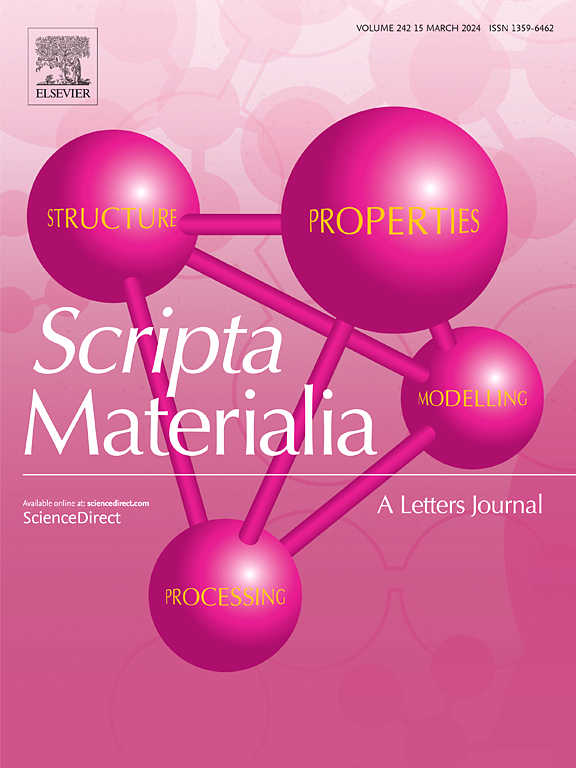Quenching induced depolarization delay and structure evolution in (1-x)Na1/2Bi1/2TiO3-xBiFeO3 ceramics
IF 5.3
2区 材料科学
Q2 MATERIALS SCIENCE, MULTIDISCIPLINARY
引用次数: 0
Abstract
As a relaxor, Na1/2Bi1/2TiO3 (NBT) presents limitations in high temperature application because of thermally induced depolarization. Stabilizing the polar ferroelectric phase is key for deferring the temperature dependent depolarization. In this work, a transition from relaxor to ferroelectric is induced by incorporating BiFeO3 (BFO) in NBT. The transition is characterized by temperature dependent dielectric and piezoelectric properties, and supported by mechanical stress-strain tests and in-situ electric field dependent synchrotron XRD analysis. To improve the depolarization temperature (Td) further, 40NBT-60BFO (60BFO) is subject to a quenching treatment. Td of 60BFO increases from 300 °C to 520 °C upon quenching. The significant increase in Td is explained by analyzing the average and local structure changes. It is found that the ordered Bi and Na ions and the intensified Bi-O bonding upon quenching contribute to the increase in Td. This work clarifies the mechanism of quenching induced enhancement Td in NBT-BFO ceramics.

求助全文
约1分钟内获得全文
求助全文
来源期刊

Scripta Materialia
工程技术-材料科学:综合
CiteScore
11.40
自引率
5.00%
发文量
581
审稿时长
34 days
期刊介绍:
Scripta Materialia is a LETTERS journal of Acta Materialia, providing a forum for the rapid publication of short communications on the relationship between the structure and the properties of inorganic materials. The emphasis is on originality rather than incremental research. Short reports on the development of materials with novel or substantially improved properties are also welcomed. Emphasis is on either the functional or mechanical behavior of metals, ceramics and semiconductors at all length scales.
 求助内容:
求助内容: 应助结果提醒方式:
应助结果提醒方式:


